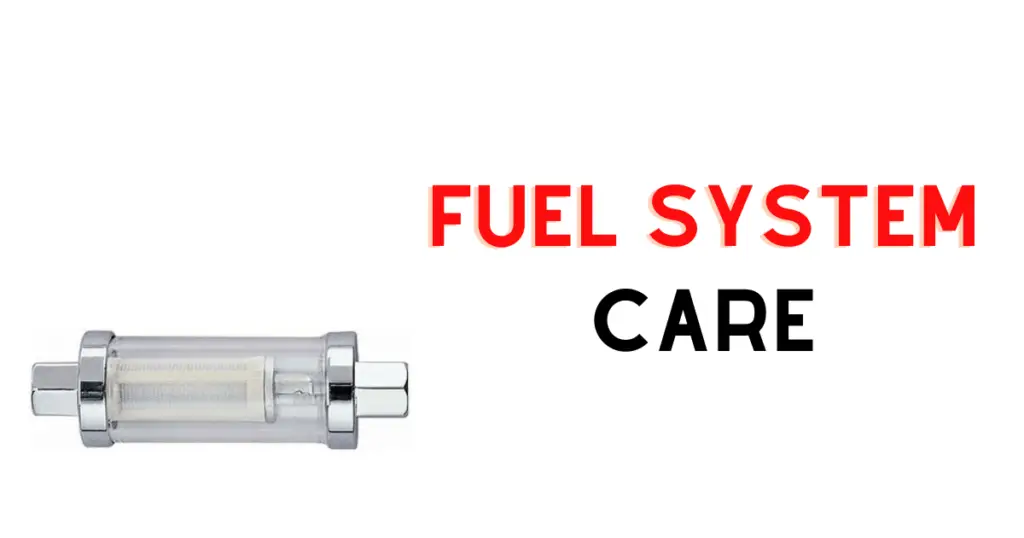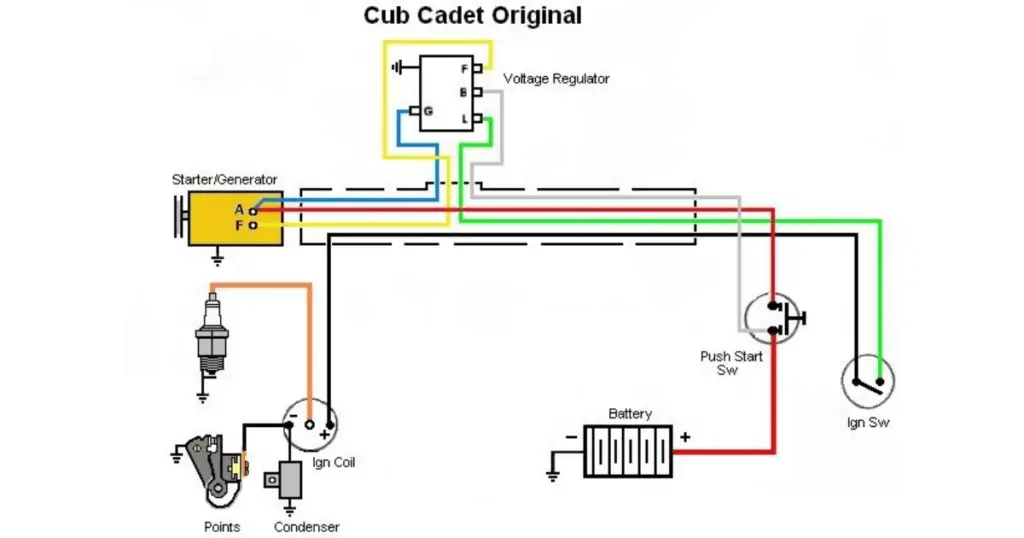When it comes to maintaining a pristine lawn, a reliable mower is a must-have. Cub Cadet mowers are known for their durability and performance, but like all machinery, they can encounter starting problems. These issues can arise from a variety of sources, including the engine not receiving essential components such as air, fuel, spark, and proper compression. Identifying the root cause can be straightforward once an owner understands the common issues that can prevent a Cub Cadet mower from starting.
Several factors can lead to starting troubles, ranging from simple oversight in the starting process to more complex mechanical failures. It’s not uncommon for basic steps to be missed during the initial attempt to start the mower, which is why reviewing the startup procedures in the operator’s manual is a good first step. On the other hand, problems such as stale fuel, a clogged air filter, a dirty carburetor, a faulty spark plug, or a weak battery may require a more hands-on approach to diagnose and fix. It’s crucial for users to systematically check each of these aspects when their Cub Cadet mower refuses to roar to life.
Troubleshooting the starting process of a Cub Cadet mower involves a careful examination of its various components. A proper diagnosis can prevent unnecessary repairs and costs, and often, the solution might be simpler than one might expect. Keeping the mower well-maintained through regular checks and service of vital parts can greatly reduce starting issues, ensuring the equipment is ready to handle lawn care with ease. So what’re you waiting for? Let’s get into the details!
More issues of note:
– Cub Cadet Hydrostatic Transmission Problems (Complete Guide)
– Cub Cadet Steering Problems: Causes and Solutions
Understanding Cub Cadet Starting Problems
Cub Cadet mowers are known for their durability and performance, but like all machines, they can encounter starting problems. This section will help owners identify common issues, properly troubleshoot, and understand the impact of fuel quality on starting performance.
What Are The Most Common Starting Issues?

Cub Cadet mowers may experience starting problems due to a variety of issues that can broadly be categorized under:
- Electrical Components: A weak or dead battery, faulty starter solenoid, or bad spark plug can prevent the engine from turning over.
- Fuel System: Issues such as bad fuel, clogged fuel filters, or Issues with the carburetor can lead to start-up failures.
- Air Intake: A dirty or clogged air filter restricts the airflow, which is essential for the combustion process.
What Are The Troubleshooting Fundamentals?
To effectively troubleshoot a Cub Cadet mower, one should systematically follow these steps:
- Check the Basics: Ensure there is gas in the fuel tank and the mower is in “park” mode with the cutting deck disengaged.
- Inspect the Battery: Test the battery’s charge and examine connections for corrosion or looseness.
- Spark Plug Inspection: Remove and inspect the spark plug for deposits, and replace it if needed.
- Air Flow Verification: Look at the air filter and clean or replace it if it’s dirty or obstructed.
What Role Does Fuel Quality Play?
The quality of fuel used in a Cub Cadet mower can have a significant impact on starting and engine performance:
- Fresh Fuel: Fuel older than 30 days can become stale, which may cause starting issues and reduce performance.
- Proper Octane Level: It’s generally recommended to use fuel with an octane rating of 87 or higher without any added ethanol.
Ignition System Components and How to Troubleshoot Them
In addressing the starting issues of a Cub Cadet mower, it’s vital to assess the ignition system components thoroughly. Proper functioning of spark plugs, ignition switches, and coils is crucial for the seamless start-up and operation of the engine.
Checking the Spark Plugs
Spark plugs are essential for the ignition to take place as they provide the spark needed to ignite the fuel-air mixture in the engine. To check the spark plugs, one should:
- Ensure the spark plug wire is securely attached.
- Inspect the spark plug for any signs of wear or damage.
- Look for signs of a loose spark plug which can lead to poor engine performance.
- Use a spark plug gauge to measure the gap and adjust accordingly for optimum performance.
- For a mower that won’t start, a spark plug that is fouled or corroded must be cleaned or replaced.
Pro Tip: When removing the spark plug, it is advisable to use a dedicated spark plug socket to avoid damage.
Inspecting the Ignition Switch and Coil
The ignition switch initiates the engine’s startup process, and the ignition coil transforms the battery’s voltage into the high voltage necessary to create a spark.
- A bad ignition switch can result in no power being delivered to the ignition system. The switch should have a solid connection and show no signs of damage or wear.
- Check for corroded terminals on the ignition switch as they can hinder electrical connectivity.
- The ignition coil must be inspected for signs of damage or failure. A bad ignition coil can prevent voltage from reaching the spark plug.
- Electrical connections associated with both the ignition switch and coil should be secure and free of corrosion.
Note: The use of a multimeter can help determine if the appropriate voltage is reaching the ignition coil and if the ignition switch is functioning as intended.
Fuel System Maintenance

Proper maintenance of the fuel system is crucial to ensure a Cub Cadet mower starts and runs efficiently. This involves regular checks and servicing of the fuel lines and filters, as well as assessing the carburetor and fuel pump for signs of wear or damage.
Fuel Line and Filter Checks
One should routinely inspect the fuel line and fuel filter for clogs or wear. A clogged fuel line can restrict the flow of fuel to the engine, making it difficult to start:
- Fuel Filter: Check for the presence of debris or sediment, which may block fuel flow. If dirty, it should be replaced.
- Fuel Line: Look for signs of wear or cracks. Any damage can lead to leaks and should be addressed promptly.
Using a fuel stabilizer can help protect against system-clogging ethanol found in modern gas. Make sure the fuel shut-off valve, if present, is open to allow fuel to reach the engine.
Assessing the Carburetor and Fuel Pump
The carburetor and fuel pump are fundamental components that require attention to prevent starting issues. Deposits from old fuel or ethanol can cause carbon buildup and a clogged carburetor:
- Carburetor: Ensure that it is clean and well-adjusted. A poorly adjusted or dirty carburetor can hinder the engine from receiving the correct fuel-to-air ratio.
- Fuel Pump: A bad fuel pump can fail to deliver the necessary pressure to move fuel through the system. Test for proper functionality and replace if it fails to maintain adequate fuel flow.
Regularly adding fuel additive to the mower’s tank can lessen problems related to fuel degradation and maintain a clean fuel system. It’s also crucial to use fresh gas and to empty the fuel tank if the mower will be stored for an extended period.
Battery and Electrical Connections
When addressing starting problems in a Cub Cadet mower, checking the battery and electrical connections is critical. These components are often the root of starting issues due to neglect or normal wear and tear.
Battery Status and Maintenance
A mower’s battery should be the first element to inspect during the troubleshooting process. A bad battery may not hold a charge, which is necessary for initiating the starting sequence of the mower. To assess the health of a battery:
- Visual Inspection: Check for any corrosion on terminals, which can be cleaned with a mixture of baking soda and water.
- Voltage Test: Using a multimeter, verify that the battery is producing approximately 12.6 volts; anything significantly lower indicates a bad battery.
Routine maintenance involves ensuring the battery is clean, the connections are tight, and that it is kept fully charged, especially during the off-season.
Solving Electrical Issues

The Cub Cadet mower’s electrical connections play an essential role in the starting process. A systematic approach to solving electrical issues includes:
- Safety Switch: Examine the safety switch, which can prevent starting if it’s a bad safety switch or if it’s not engaged properly.
- Charging System: Test the charging system with a multimeter to ensure it is functioning correctly. A faulty charging system can cause the battery to deplete.
- Loose Connection: Inspect all wiring and connectors for a loose connection that may disrupt electrical flow.
Employing a multimeter for most of these troubleshooting steps should be done with caution to avoid electric shock or damage to the mower’s electrical system.
Air Intake and Engine Care
Maintaining unobstructed air intake and ensuring the engine’s health are crucial for the optimal performance of a Cub Cadet mower. An adequate flow of clean air combined with high-quality oil directly impacts the mower’s ability to start and run smoothly.
Air Filter Condition
The air filter is the first line of defense against debris entering the engine. A clogged or dirty air filter restricts airflow, causing the engine to run rough and potentially overheat. Regular maintenance should include:
- Checking the air filter before each use.
- Cleaning or replacing the air filter every 25 hours of use, or annually.
To clean a foam filter, one can typically use warm, soapy water, followed by a thorough rinse and complete air dry. For paper filters, replacement is the recommended option if the filter appears dirty or damaged.
Engine Health and Oil Quality
The engine relies on clean, high-quality oil to operate efficiently. Poor oil quality or incorrect levels can lead to problems such as overheating and engine wear. To ensure the engine’s durability:
- Check oil level before each use, topping up if needed.
- Change oil every 50 hours of use or at least once per mowing season.
When performing maintenance on spark plugs:
- Inspect spark plugs annually for signs of wear.
- Replace any bad or dirty spark plugs to avoid starting issues.
It is also important to follow the starting procedure as outlined in the operator’s manual, and to use an air compressor for cleaning, when needed, following all safety precautions. Furthermore, a malfunctioning safety switch could prevent the mower from starting, therefore, this should be checked during routine maintenance.
Frequently Asked Questions
In addressing common issues with Cub Cadet mowers, it is crucial to identify and troubleshoot starting problems effectively. This section aims to answer several frequently asked questions with precise and actionable information.